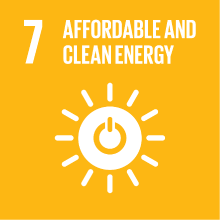NANOFABRICATION AND SYNCHROTRON TECHNIQUES FOR ADVANCED MATERIALS
- Academic year
- 2025/2026 Syllabus of previous years
- Official course title
- NANOFABRICATION AND SYNCHROTRON TECHNIQUES FOR ADVANCED MATERIALS
- Course code
- PHD216 (AF:582502 AR:328938)
- Teaching language
- English
- Modality
- On campus classes
- ECTS credits
- 6
- Degree level
- Corso di Dottorato (D.M.226/2021)
- Academic Discipline
- FIS/01
- Period
- Annual
- Course year
- 1
- Where
- VENEZIA
- Moodle
- Go to Moodle page
Contribution of the course to the overall degree programme goals
Expected learning outcomes
• Understand the fundamentals of nanofabrication.
• Differentiate between optical and e-beam lithography in terms of resolution and scalability.
• Be able to apply CAD tools in the design of lithographic masks.
• Compare thin-film deposition techniques such as evaporation and sputtering.
• Be familiar with both wet and dry etching methods, understanding their applications and limitations.
• Be able to plan the nanofabrication of a real device.
• Understand the fundamental principles and applications of synchrotron X-ray techniques, including diffraction, spectroscopy, and imaging.
• Critically analyze and interpret data obtained from synchrotron experiments.
• Establish connections between their own research and state-of-the-art synchrotron methodologies, facilitating interdisciplinary collaboration.
Pre-requirements
Contents
1. Introduction to Nanofabrication (2 hours)
• Overview of nanofabrication technologies: applications in physics, electronics, materials science, and beyond
• Cleanroom environments: contamination control, safety protocols, and equipment
• Brief review of vacuum technologies, cryogenics, and plasma
2. Lithography Techniques (5 hours)
• Optical Lithography:
→ Principles of optical lithography: laser writer and mask aligner
→ Photoresists: positive and negative lithography, polymer chemistry
• Electron Beam Lithography:
→ Principles of e-beam lithography for high-resolution patterning
→ E-beam resists (PMMA, other materials) and their processing
• Optical vs. e-beam lithography: resolution, scalability, and costs
• CAD Design for Lithography: Introduction to CAD design tools (AutoCAD) for layout and mask creation
• Demonstration: laser writer lithography
3. Evaporation and Sputtering (4 hours)
• Evaporation Techniques:
→ Electron-beam evaporation: working principles, materials, applications
→ Thermal evaporation: fundamentals, sources, film thickness control
• Sputtering:
→ DC and RF sputtering: principles, deposition of metals, oxides
• Demonstration: evaporation of a thin film
4. Etching Techniques: Wet and Dry (4 hours)
• Acid-Based Etching:
→ Key acids (HF, HCl, H2SO4) and their roles in material removal
→ Isotropic vs. anisotropic etching: controlling etch profiles
• Solvent-Based Cleaning:
→ Resist removal with solvents (acetone, IPA), surface cleaning methods
• Plasma Ashing:
→ Fundamentals of plasma ashing for resist removal and cleaning
• Reactive Ion Etching (RIE):
→ Principles of anisotropic etching, process gases, material selectivity
• Wet vs. dry etching techniques: pros and cons
• Demonstration: using a RIE or plasma ashing system
5. Fabricating a Real Device (2 hours)
• Overview of device fabrication steps: combining lithography, deposition, and etching
• Practical challenges in fabricating nanoscale devices
• Practical example
6. Introduction to Synchrotron Techniques (4 hours)
• Overview of the interaction between X-rays and matter
• Generation of synchrotron radiation
→ Defining properties of X-ray radiation, Advantages of synchrotron radiation
• Basic principles of synchrotron storage rings
7. Spectroscopy (8 hours)
• Photoemission (PES)
o Angle-resolved photoemission Spectroscopy (ARPES): band structure mapping, Fermi surface, many-body interactions
• X-ray Absorption (XAS)
• Resonant X-ray Scattering (RXS)
• Examples of spectroscopy applications for characterizing advanced materials
8. Real space and reciprocal space Imaging (3 hours)
• X-ray Microscopy and Tomography
• Diffraction techniques
• Small-Angle X-ray scattering (SAXS), X-ray photon correlation spectroscopy (XPCS)Applications in high-resolution structural analysis
Referral texts
• “Micro and Nano Fabrication Tools and Processes” – Hans H. Gatzen, Volker Saile, Jürg Leuthold
• “Synchrotron Light Sources and Free-Electron Lasers” – Eberhard J. Jaeschke, Shaukat Khan, Jochen R. Schneider, Jerome B. Hastings
Assessment methods
• Nanofabrication: Oral examination consisting of a ~15-minute presentation of a fabrication process adopted in a recent high-impact scientific publication that students have read, followed by 15-20 minutes of questions.
• Synchrotron Techniques: 20-25 minute seminar where students will:
→ Present their own research (or a related study) and its connection to synchrotron X-ray techniques.
→ Discuss one or more techniques covered in the course, using examples from the literature.
→ Demonstrate a solid grasp of course concepts through clear explanations and relevant examples.
→ Propose original applications and interconnections with other topics to show deeper understanding.
Type of exam
Grading scale
• 22-26/30: Good understanding of individual topics but limited integration among them.
• 18-21/30: Basic knowledge of individual concepts with minimal conceptual depth.
Teaching methods
• Practical demonstrations of nanofabrication tools.
• Hands-on CAD design exercises.
• Case studies and real-world applications.
Further information
• Course topics and content may be adjusted based on student needs and advancements in the field.
2030 Agenda for Sustainable Development Goals
This subject deals with topics related to the macro-area "Climate change and energy" and contributes to the achievement of one or more goals of U. N. Agenda for Sustainable Development


